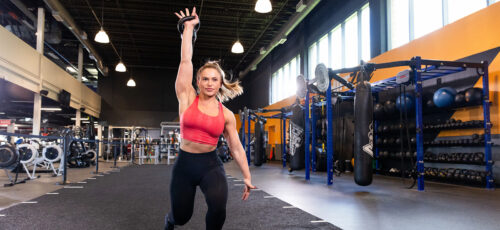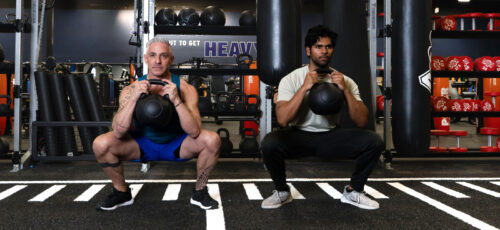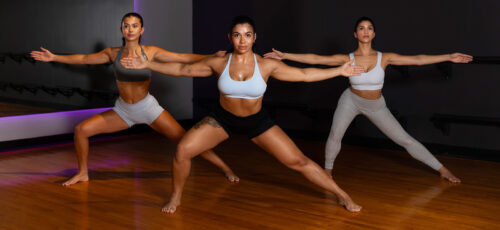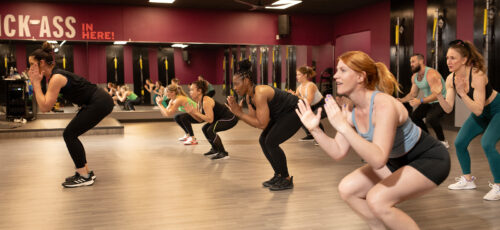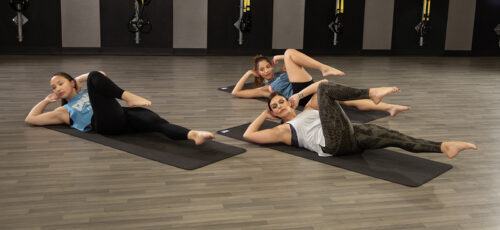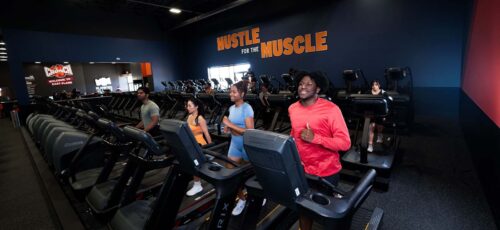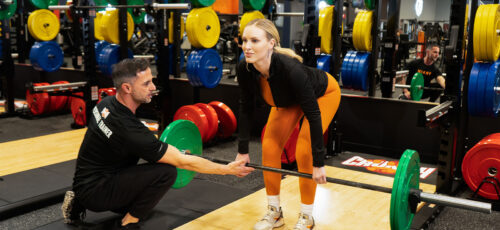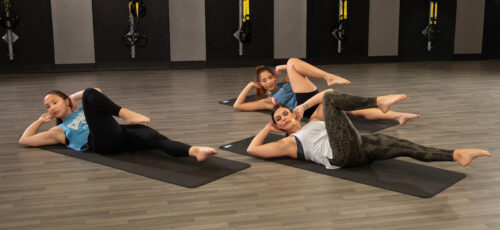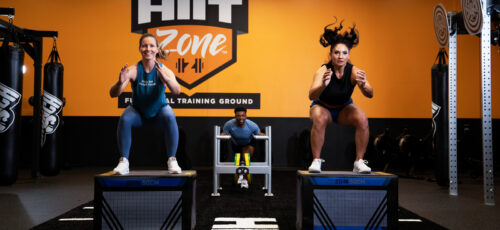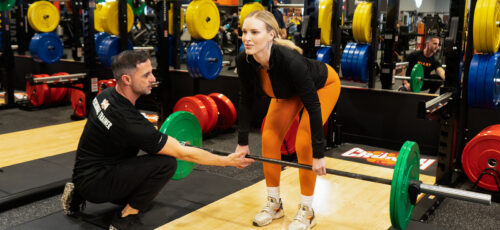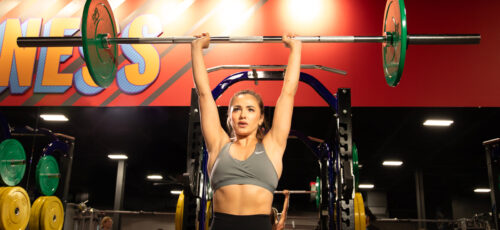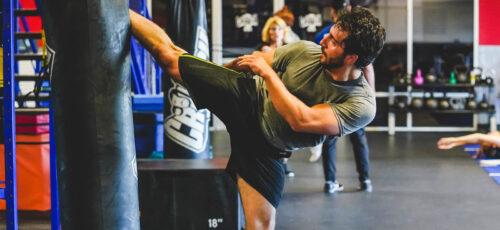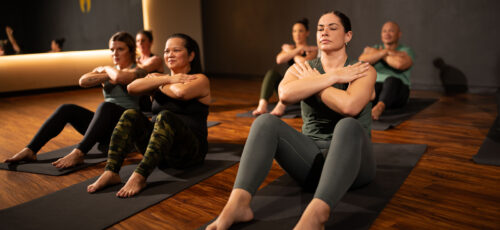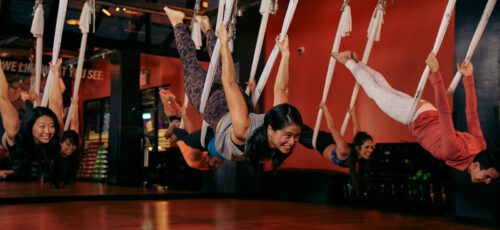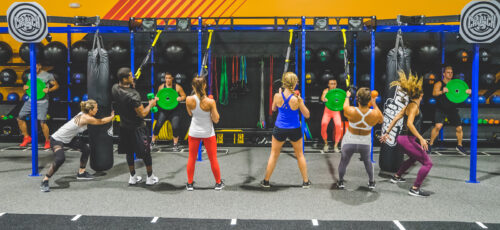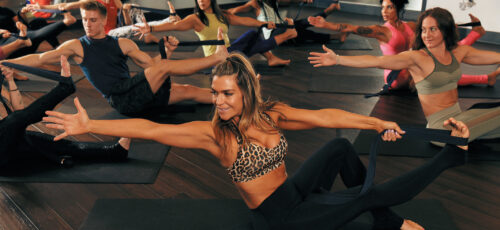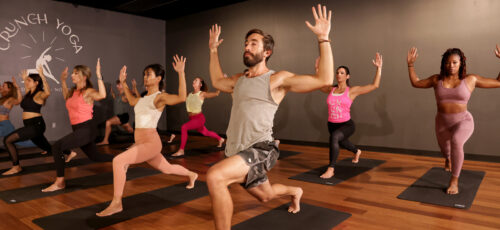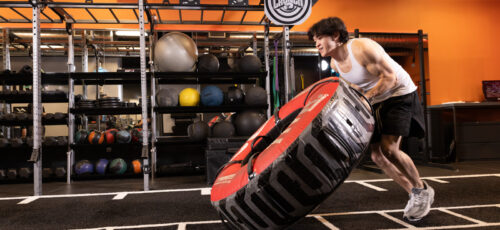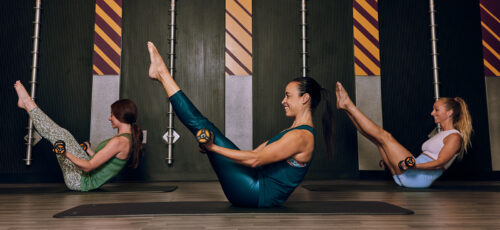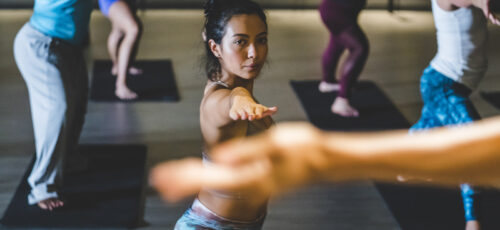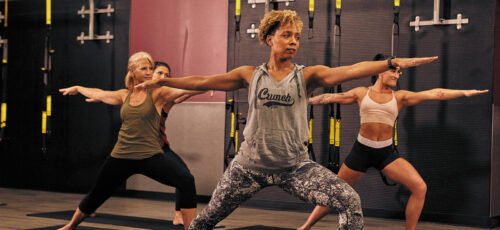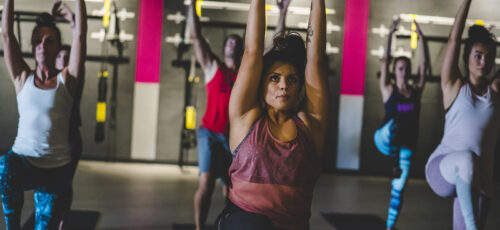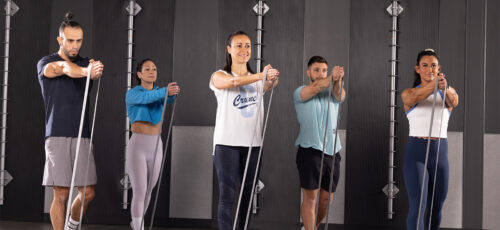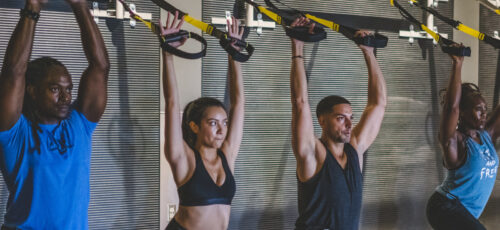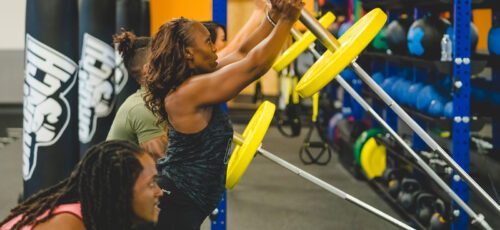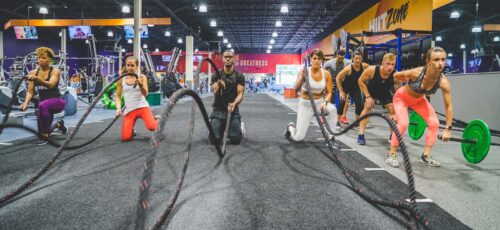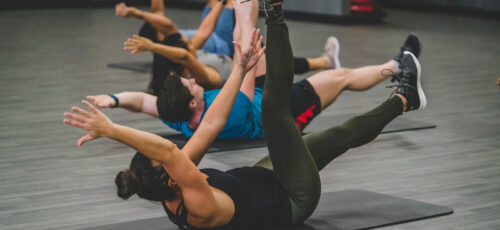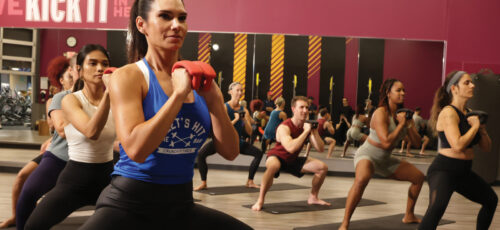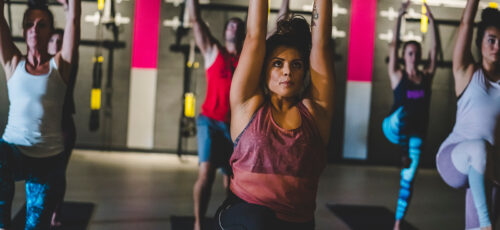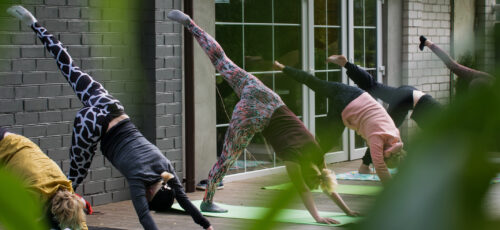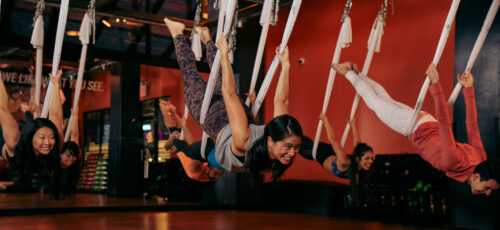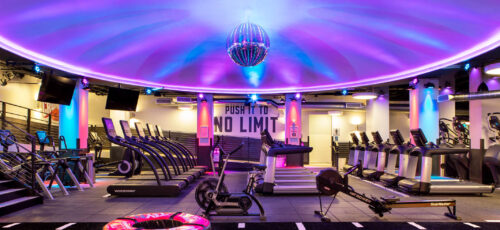
Before embarking on a yoga journey, you might have asked yourself, how long is a yoga class? Well, this is not a simple question to answer, and it involves more than just stepping onto the yoga mat. Understand the variations of class durations and yoga styles, and tailor your practice to suit your individual needs.
In the vast world of yoga, class durations vary widely, from quick 30-minute sessions to more extended practices lasting 90 minutes or more. Each duration offers distinct advantages, catering to different preferences, schedules, and goals. Most classes at Crunch Fitness recognize the increasingly busy lifestyles of our members, offering options ranging from shorter sessions to hour-long classes, allowing you to choose what suits your daily routine.
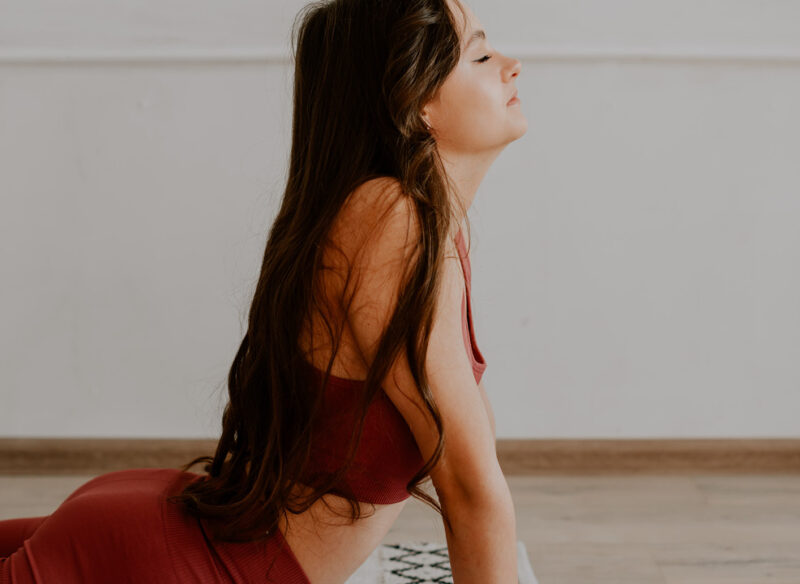
Yoga styles are crucial in class planning, influencing the choice of poses and class times. Whether it’s the dynamic flow of Vinyasa, the precision of Iyengar, or the therapeutic nature of Yin, understanding these styles helps select the suitable duration for your practice. The warm-up, an essential part of most of these, varies in length, preparing your body for the yoga poses ahead.
Tailoring classes to specific themes and demographics ensures inclusivity and addresses the diverse needs of practitioners. Different lengths of classes, be it express sessions or longer practices, accommodate practitioners of all levels and goals, providing flexibility in your yoga journey.
Delving deeper into the impact of class duration on your yoga practice unveils a range of physical and mental health benefits. Shorter sessions, like our 30-minute classes, offer a quick burst of energy, aiding flexibility and mood improvement. On the other hand, longer classes provide an immersive experience, promoting spiritual growth, mental clarity, and overall well-being.
Understanding the health benefits associated with different class durations empowers you to align your practice with your goals. These short sessions are perfect for those seeking a convenient way to integrate yoga into their busy schedules. Longer classes, with their extended duration, allow for a more comprehensive exploration of yoga poses and breathing techniques, fostering a deeper connection with your practice.
Whether you prefer the efficiency of shorter sessions or the depth of hour-long classes, today we’ll delve into the fantastic variety of yoga classes, providing a variety of yoga classes that support your individual needs.
Let your yoga mat become a sanctuary, the studio space where you can naturally find physical and mental well-being and the yoga class that puts your needs as the most important thing.
The Impact of Class Duration on Practice
Short sessions, typically 30 to 45 minutes, offer a quick burst of energy, making them perfect for busy schedules and fitting into most people’s daily routines. They not only improve flexibility and mood but also serve as a convenient option for those on a time crunch, making it easier for individuals to integrate yoga into their week.
For most people with tight schedules, like students or office employees, the ability to focus on a short yoga session can be a game-changer. These are power-packed, with a particular focus on dynamic movements, which not only help improve flexibility but also release tension in a short amount of time.
Moreover, these sessions can be an excellent mood booster. Combining breathwork and movement stimulates the release of endorphins, the body’s natural mood enhancers. Whether it’s a lunch break or a quick session before work, short classes provide an effective way to incorporate yoga into a hectic lifestyle, allowing individuals to experience the benefits without sacrificing too much time.
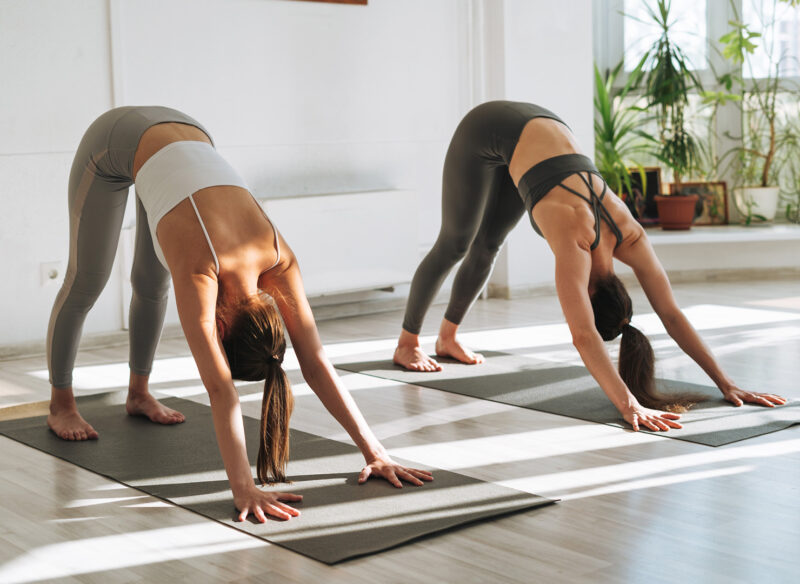
On the other hand, longer classes provide an immersive experience, allowing for a more profound exploration of postures and breathing techniques. They typically last one hour or more, with options such as 90-minute classes available for those seeking an extended practice. These longer class times cater to individuals with enough time to dedicate to a deeper, more comprehensive yoga experience.
The extended duration of longer yoga sessions, especially those lasting 90 minutes, allows practitioners to sink deeper into each pose, fostering a sense of presence and mindfulness. For example, during an hour-long class, the warm-up may take up the initial minutes, followed by an exploration of various yoga poses and a period of meditation or relaxation towards the end.
For those seeking spiritual growth, longer classes provide a unique opportunity for a more meditative experience, promoting mental clarity and a deeper connection with one’s inner self. Teachers in longer classes often have more time for guided meditation or mindfulness practices, creating a balanced and holistic yoga experience.
In the science of teaching yoga, finding the right balance between shorter and longer class times is essential. Understanding how much time students can dedicate to their practice each week is crucial for tailoring classes that meet their needs. Whether it’s a shorter, invigorating session or a more extended, immersive practice, the science of teaching yoga involves creating an experience that enhances self-awareness and overall well-being naturally and cohesively.
The Importance of Knowing Your Level
Understanding your yoga level is crucial for optimizing the benefits of your practice. Different levels require different approaches. Beginners gradually benefit from shorter classes to build confidence, while intermediate to advanced yogis find fulfillment in longer, more challenging practices.
Tailoring the duration of your yoga practice based on your level is essential for a fulfilling experience. Beginners who are still acquainting themselves with the fundamentals may find shorter classes (30-45 minutes) more approachable. These sessions allow for a gradual introduction to basic poses, breathing techniques, and the overall rhythm of a yoga class.
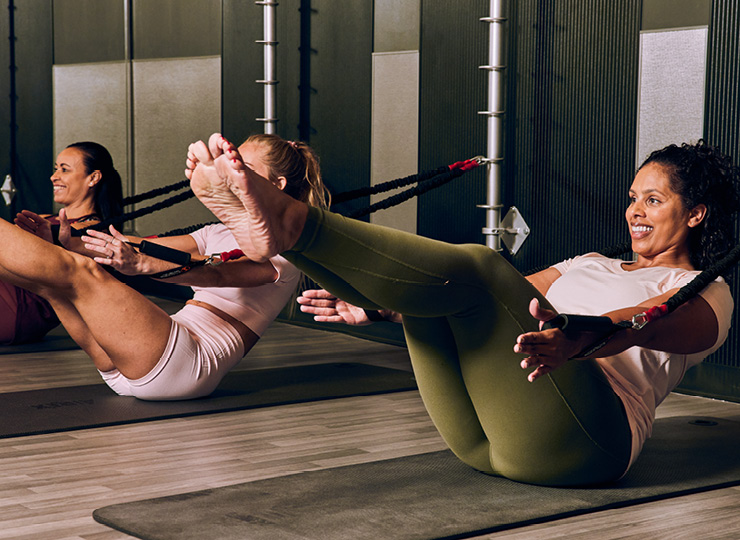
As practitioners progress to intermediate and advanced levels, longer classes become increasingly beneficial. These sessions provide the time needed for more challenging poses, advanced sequencing, and deeper exploration of the mind-body connection. They offer a holistic and fulfilling practice for those seeking to push their boundaries and enhance their yoga journey.
A well-thought-out class focuses on thoughtfully curated sequences that provide a balanced mix of postures, breathwork, and relaxation. Whether you’re a busy professional or a parent juggling multiple responsibilities, yoga classes offer a convenient way to prioritize your well-being without sacrificing time.
Understanding your personal goals is critical to tailoring your yoga practice. Are you seeking stress relief, improved flexibility, or a deeper spiritual connection? The answer to this question can guide you in choosing the appropriate class duration.
Short-term classes may be the perfect fit if you aim to establish a consistent practice within a busy schedule. On the other hand, if you aspire to challenge yourself physically and mentally, longer classes provide the time and space for a more comprehensive exploration of your practice.
Yoga Beyond the Mat: Integrating Practice into Daily Life
Yoga is not confined to the mat; it’s a lifestyle that extends beyond the boundaries of traditional yoga classes. Integrating your practice into daily life is not just a suggestion but an essential component for long-term well-being.
Even a few minutes of mindful breathing or a short series of stretches can positively impact your day, demonstrating that yoga isn’t necessarily bound by the formalities of a structured yoga class.
The beauty of yoga lies in its adaptability to various lifestyles. Finding a few minutes for a short yoga practice can make a significant difference, even on the busiest days. This adaptability allows individuals to explore and develop their yoga practice beyond the confines of traditional yoga classes.
Yoga is a lifestyle that encourages individuals to explore and develop their practice in ways that suit their unique needs. It isn’t necessarily about attending formal yoga classes; instead, it’s about incorporating yoga principles into your daily life.

Whether it’s a moment of mindful breathing during a work break or a series of gentle stretches before bedtime, these short practices can create a relaxed yet purposeful atmosphere.
The intention behind these moments is not just to check off a daily task but to consciously bring the principles of yoga into your everyday life, allowing you to stay connected with your body and mind.
Exploring short practices outside the formal structure of a yoga class provides an opportunity to be in tune with your body’s needs. Teachers often explain the significance of incorporating these practices into daily routines, emphasizing that the benefits extend beyond the physical aspects of yoga.
It’s about cultivating a mindset of mindfulness and relaxation that permeates every aspect of your life.
For both students and teachers, the understanding that yoga is not confined to a specific class time or setting fosters a more holistic approach to life.
Join Us!
With the correct guidance from a professional yoga teacher and an active, dynamic group that shares your passion for yoga, you can create a community to help you achieve all your fitness goals and enhance your yoga training experience even further.
Crunch promotes a culture of positivity, inclusivity, and fun with no judgments by providing an environment for all individuals regardless of their health and fitness goals. Find a Crunch gym near you to try our free trial membership, or join Crunch now. We’re here for you – at the gym or at home. Access the best live & on-demand workouts anytime, anywhere with Crunch+. Ready to get sweaty? Try hundreds of workouts for free! Start your free trial now!









